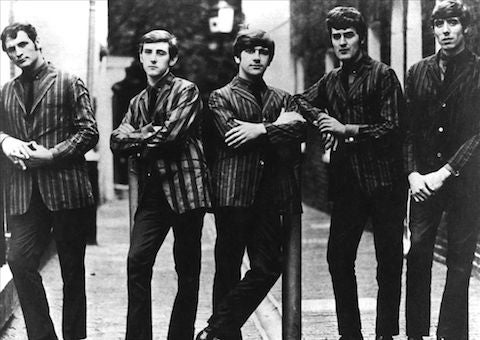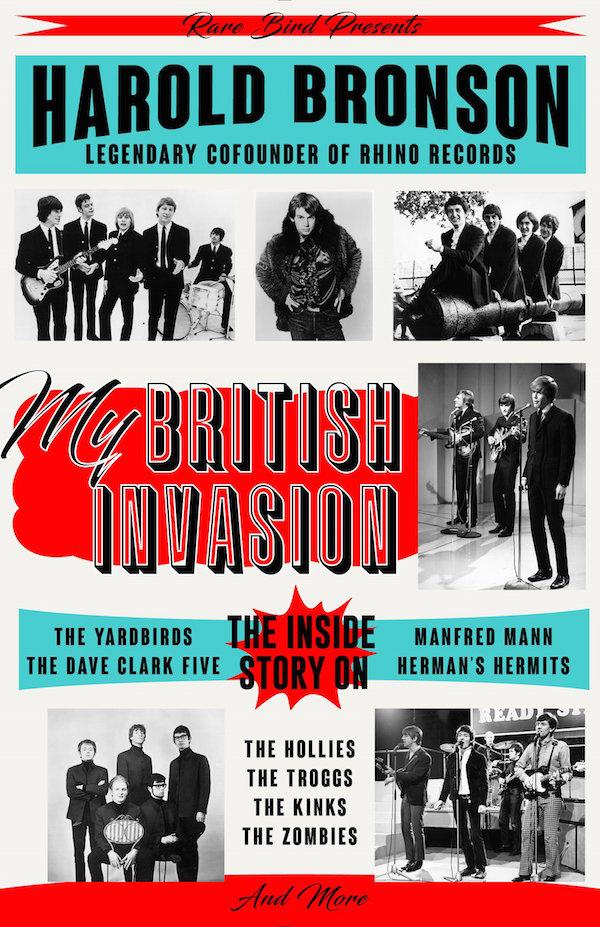
The Moody Blues
Harold Bronson’s new book, My British Invasion - The Inside Story on The Yardbirds, The Dave Clark Five, Manfred Mann, Herman’s Hermits, The Hollies, The Troggs, The Kinks, The Zombies, is both a history of post-Beatles invasion America by British bands, and a personal memoir of a teenage fanboy who turned his passion into a career as founder of Rhino Records. Much of the latter story was told in Bronson’s first memoir, The Rhino Records Story: Revenge of the Music Nerds (2013), but in this prequel Bronson focuses on his teenage and college years in L.A., when, like Cameron Crowe’s hero in Almost Famous (2000), he began writing articles for Rolling Stone and other rock rags. He interlaces these passages with quasi-biographical chapters on some of his favorite rock bands from the period.
When The Beatles appeared on the Ed Sullivan Show in February 1964, I was 13 and an instant fan. Six months later, my parents moved the family to Essen, Germany, and I experienced one of the most depressing periods of my life. Little did I know at the time that I was suffering from intense culture shock, having been tossed into a new school, a foreign language and an alien culture. British popular music was huge in Germany, often entering the hit parade days after charting in the U.K. As a result, English bands on BFN (British Forces Network), Radio Luxembourg and pirate Radio Caroline became an emotional lifeline to my linguistic past, even if it was accented. Like Bronson, I loved The Yardbirds, The Who, The Kinks, The Hollies, and also The Moody Blues, Pink Floyd and The Move. For several years in my teens, I read Musik Parade and Bravo, two German teen magazines that covered the U.K. music scene. Thus, my perspective of the British invasion was from East of London rather than West.
 Bronson begins his book with a month-by-month account of concert going in his senior year at UCLA (1971-72), when he was spending much of his time writing about rock music for The Daily Bruin and Rolling Stone, acting as a college rep for CBS Records, and singing in his own band. He specialized in interviews with the likes of The Moody Blues, Procol Harum, Marc Bolan, Nitty Gritty Dirt Band and many others. Each section ends with Bronson listing his favorite LPs from that month. My favorite little-known fact: Yes and Rick Wakeman were incompatible because the former were vegetarians.
Bronson begins his book with a month-by-month account of concert going in his senior year at UCLA (1971-72), when he was spending much of his time writing about rock music for The Daily Bruin and Rolling Stone, acting as a college rep for CBS Records, and singing in his own band. He specialized in interviews with the likes of The Moody Blues, Procol Harum, Marc Bolan, Nitty Gritty Dirt Band and many others. Each section ends with Bronson listing his favorite LPs from that month. My favorite little-known fact: Yes and Rick Wakeman were incompatible because the former were vegetarians.
Bronson then devotes individual chapters to the bands listed on the cover. His narratives of these mostly mid-1960s rock groups focus on the up-and-down fortunes of their singles output, which Bronson consumed as a high schooler, augmented by insider interviews from the 1970s, when almost all of the groups had disbanded or were past their prime, and his own attempts to rerelease some of their music at Rhino in the 1980s and 1990s. These chapters are filled with love and passion, but also some disappointment, when band members did not live up to the author’s expectations or refused to cooperate with Rhino on rereleases, as was the case with The Kinks’ Ray Davies.
Bronson’s intense love of music also comes through in his chapters on his trips to London to hunt down various musicians, as well as in chapters on the British phenomenon of pirate radio and Granny Takes a Trip, a hip London boutique. Some of Bronson’s best passages in fact discuss the interface between music, fashion and the times, e.g. when he mines the origins of Glam Rock in a chapter on composer-producer Mike Chapman. But his love is also tempered by an at times ironic distance, possibly because Bronson apparently did not embrace the all so prevalent drug culture and other excesses. His voice remains that of a middle-class, American Jewish kid who was anything but a chick magnet, despite singing in a band. Indeed, he seems to have been painfully shy, as his not infrequent stories about failed girlfriend attempts attest.
For both contemporaries and younger readers, this book is indeed an excellent time capsule of the 1960s and 1970s and its popular music. Harold Bronson wants you to love the music, as he does, so he closes with recommended playlists for his favorite bands. My own personal discovery from those lists: “Still I’m Sad” by The Yardbirds, a song I somehow missed back in the day.
< Back to Archival Spaces blog






 Mobile Navigation
Mobile Navigation

